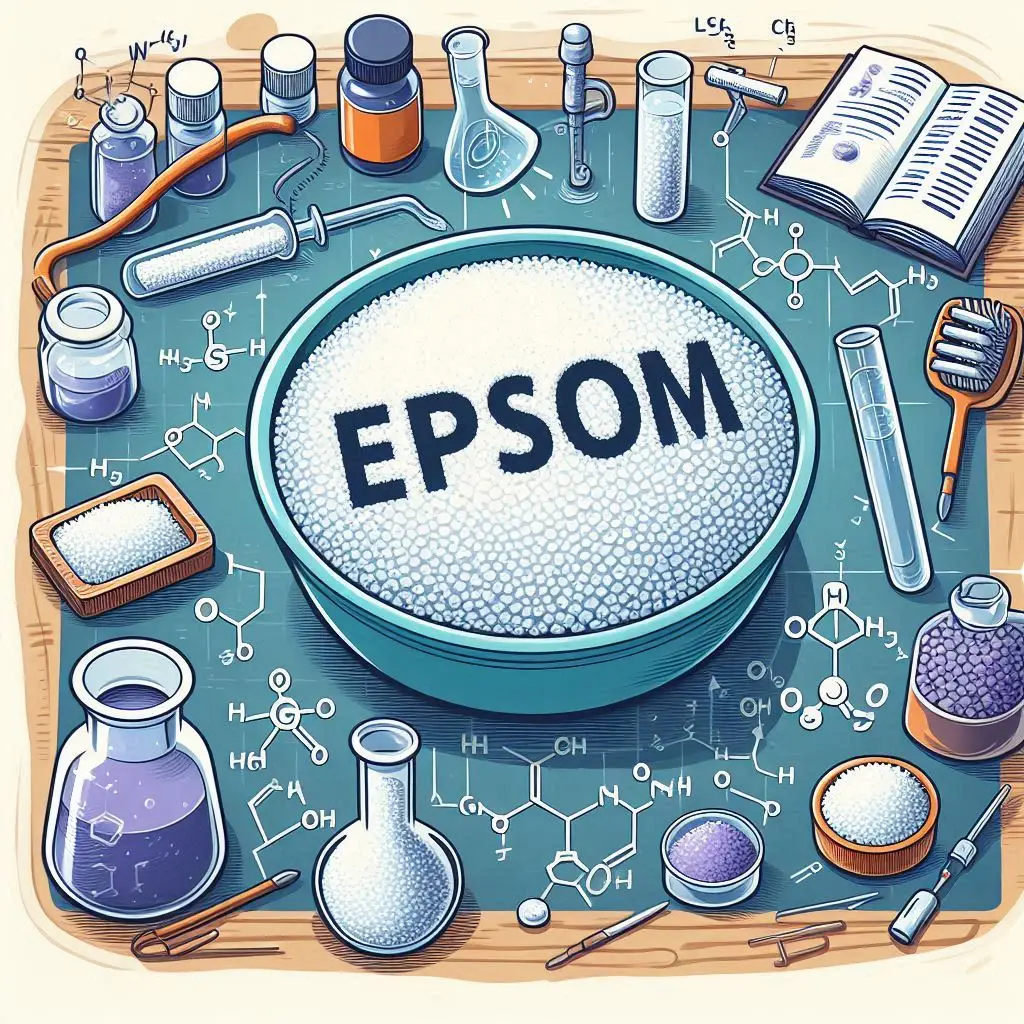
Epsom salt meaning in chemistry
I want to talk about Epsom salt meaning in chemistry today.
Epsom salt sometimes referred to as magnesium sulfate heptahydrate (MgSO₄·7H₂O) in science, is a useful substance with important chemical applications. This material has drawn interest because of its special qualities, uses, and contributions to several chemical processes.
Chemistry is a field in which Epsom salt is very important. It is a compound of interest for both laboratory and practical applications due to its chemical structure, physical characteristics, and range of uses. Epsom salt is a prime example of the diverse range of uses that a single chemical component may have, from its function in precipitation processes to its significance in agriculture and medicine. Comprehending the chemistry of Epsom salt not only enhances our comprehension of this particular substance but also offers perspectives on more extensive chemical concepts and uses. Epsom salt is still being studied in chemistry, providing an opportunity for further comprehension and use in a variety of scientific and practical applications.
In addition to its well-established uses and lengthy history, Epsom salt has great potential for future advancements in the rapidly developing science of chemistry. Epsom salt is still fascinating to academics and practitioners because of its prospective use in green chemistry as well as its applications in catalysis, materials science, and medicine. Epsom salt is a living example of how chemical research is dynamic and ever-evolving, providing solutions that are in line with sustainability and creativity as we explore its full potential. Epsom salt research and discovery are far from finished, and the field of chemistry stands to benefit much from its contributions in the future, leading to a better-developed and sustainable scientific environment.
Epsom salt's chemical composition and structure are made up of water molecules, magnesium, sulfur, and oxygen. Its chemical formula, MgSO₄·7H₂O, indicates that it is made up of seven water molecules, one sulfate ion (SO₄²⁻), and one magnesium ion (Mg²⁺).
Formation and Occurrence: The combination was first found in natural springs in the town of Epsom, Surrey, England, which is where the term "Epsom salt" originates. It is created when magnesium sulfate crystallizes in conditions with plenty of water. Epsom salt may also be found on rocks as an efflorescence and in subterranean deposits.
Physical Properties: Colorless, odorless, and crystalline is how Epsom salt usually looks. One important property is that it dissolves easily in water to produce a transparent solution. Water molecules are present in the hydrated crystals, which contribute to their heptahydrate structure.
Chemical Properties: The ions that make up Epsom salt, magnesium, and sulfate, are mainly responsible for their chemical characteristics. Many biological functions depend on magnesium, and the synthesis of sulfur-containing molecules involves sulfate. Epsom salt separates into its ions in solution, which affects how reactive it is in chemical reactions.
Chemistry Applications:
Rainfall Reactions: In the laboratory, Epsom salt is often used to trigger precipitation reactions. For instance, it may be mixed with a barium ion solution to create insoluble barium sulfate, which is a standard way to analyze sulfate ions qualitatively.
Epsom salt is used as a desiccant to draw moisture from the air since it is hygroscopic. Because of this characteristic, it is useful for preserving the dryness of certain materials and settings.
Epsom salt is a handy way to get magnesium ions for use in a variety of chemical reactions. A vital component of biological systems, magnesium's availability is necessary for a wide range of metabolic processes.
Use in Agriculture: Epsom salt is used in agriculture to augment soil magnesium levels to solve plant magnesium shortages. Crop quality and production are improved by this treatment.
Applications in Medicine: Because of its alleged therapeutic benefits, Epsom salt is often used in medical baths. It is thought that magnesium's skin absorption eases tense muscles and encourages relaxation.
Emerging Trends and Future Prospects: Research is continuing to find new and intriguing uses for Epsom salt in chemistry, beyond its well-established uses. Its possible use in green synthesis and sustainable chemistry is one area of focus. Epsom salt comes into focus as a potential tool for encouraging greener and more sustainable chemical processes as the scientific community becomes more and more focused on ecologically friendly methods.
Epsom salt's water solubility creates opportunities for its use in aqueous solutions, potentially positioning it as a green solvent. To lessen the dependency on conventional, often dangerous chemical solvents, researchers are looking at using it as a reaction medium for organic transformations. The safe properties of Epsom salt, together with its accessibility and little ecological footprint, are consistent with the tenets of green chemistry.
Furthermore, the catalytic potential of the magnesium ion found in Epsom salt has drawn interest. Catalysts based on magnesium have shown promise in several reactions, such as the hydrogenation and creation of carbon-carbon bonds. With Epsom salt acting as a precursor for magnesium-based catalysts, this has consequences for the creation of sustainable catalytic systems.
Epsom salt is being studied in the realm of materials science for its potential in the synthesis of new materials. Certain circumstances may cause Epsom salt to crystallize under control, producing interesting nanostructures and microparticles. Once acquired, these materials may be used in sensors, medication administration, and other cutting-edge technology.
Furthermore, there is curiosity about Epsom salt's potential as a humidity-control agent due to its hygroscopic nature. Epsom salt has potential benefits over traditional desiccants, including cost- and environmentally-friendlyness. Studies are in progress to maximize its use in applications that are susceptible to moisture, such as the preservation of delicate electronic parts.
Further research on the medicinal benefits of Epsom salts is now underway in the field of medicine. Although its traditional use in baths to relax muscles is widely recognized, an increasing amount of study is examining its potential to treat skin disorders including eczema and psoriasis. The wider health effects of transdermal absorption of magnesium from Epsom salt baths are being investigated.

